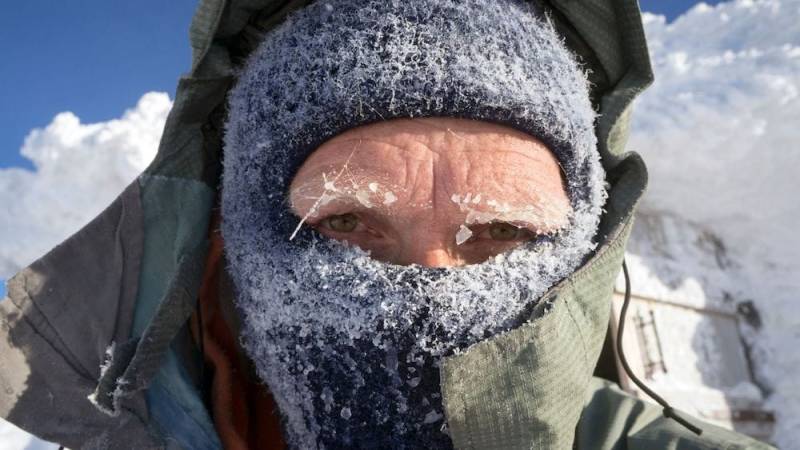
cold
Nomen
Meaning
Cold is a term used to describe low temperatures in the context of survival, wilderness, bushcraft, camping, hiking, and outdoor activities. It is a crucial concept to understand and prepare for when venturing into the great outdoors. Cold weather can pose various challenges and risks to your well-being, such as hypothermia and frostbite. It is essential to dress appropriately, insulate your shelter, and have the necessary skills and knowledge to stay warm and safe in cold conditions. Understanding the effects of cold on the body and how to mitigate them is vital for any outdoor enthusiast.

Examples
„I love spending time in the wilderness, but dealing with the cold can be a real challenge.“
„When I go camping in the winter, I always make sure to pack plenty of warm clothing and a good sleeping bag to stay protected from the cold.“
„During a recent survival training, we learned how to build a shelter that would keep us warm even in freezing temperatures.“
„One of the most important skills to have in the wild is starting a fire, especially when it's cold and you need to stay warm.“
„When I go hiking in the mountains, I always check the weather forecast to make sure I'm prepared for any sudden drops in temperature.“
Origin
The word "cold" originates from the Old English word "cald," which can be traced back to the Proto-Germanic word "kaldaz." This word has its roots in the Proto-Indo-European word "gel-" meaning "cold" or "to freeze."
Throughout history, the concept of cold has been associated with low temperatures and the absence of heat. It is a fundamental aspect of nature and has played a significant role in human survival.
In ancient times, humans had to adapt to cold environments to ensure their survival. They developed various techniques and skills to withstand the cold, such as building shelters, creating fire, and crafting warm clothing from animal hides.
Over time, the understanding and management of cold have evolved. With advancements in technology and scientific knowledge, humans have been able to create artificial sources of heat, develop insulation materials, and improve cold weather gear.
In the context of survival and outdoor activities, understanding how to deal with cold is crucial. It involves knowing how to regulate body temperature, prevent hypothermia, and effectively use available resources to stay warm.
Today, the word "cold" is not only used to describe low temperatures but also to convey a sense of discomfort, illness, or lack of warmth. It is a versatile word that encompasses both physical and metaphorical meanings.
Synonyms
Chilly, Frigid, Freezing, Icy, Frosty, Wintry, Cool, Brisk
Antonyms
Hot, Warm, Heated, Boiling, Scorching, Fiery, Sweltering, Blazing
Relatives
Freezing, Chilly, Frosty, Icy, Frigid, Wintry, Arctic, Polar
Historical and cultural importance
The word "cold" has significant historical and cultural relevance. Throughout history, humans have had to adapt and survive in cold climates, making it an essential aspect of survival knowledge. In many cultures, cold weather and extreme temperatures have shaped traditions, clothing, and even architecture.
In ancient times, civilizations in colder regions developed unique techniques to combat the cold. For example, the Inuit people of the Arctic relied on igloos, which provided insulation and protection from the freezing temperatures. These structures were ingeniously designed to trap heat and withstand harsh weather conditions.
Cold weather also played a crucial role in the exploration and colonization of new territories. Explorers and settlers had to endure freezing temperatures and harsh conditions, often relying on their survival skills to stay alive. The ability to start a fire, build a shelter, and find or preserve food in cold environments was essential for their survival.
Furthermore, cold weather has influenced cultural practices and traditions around the world. Winter festivals, such as Christmas and Hanukkah, celebrate the winter season and bring communities together. Traditional clothing, like fur coats and hats, have been developed to provide warmth and protection against the cold.
In conclusion, the word "cold" holds historical and cultural significance due to its impact on human survival, exploration, and cultural practices. Understanding the historical and cultural context of cold weather is essential for anyone interested in wilderness survival and outdoor activities in cold climates.
More information about the term cold
Surviving the Cold: Essential Skills for Wilderness Adventures
When it comes to wilderness adventures, one of the biggest challenges you may face is dealing with the cold. Whether you're hiking in the mountains, camping in the winter, or simply exploring the great outdoors, knowing how to survive in cold conditions is crucial. In this guide, I'll share with you some essential skills and tips to help you stay warm and safe in the cold.
Understanding the Cold
Before we dive into the survival techniques, it's important to understand how the cold affects our bodies. Exposure to cold temperatures can lead to hypothermia, a potentially life-threatening condition where your body loses heat faster than it can produce it. It's important to dress appropriately, stay dry, and conserve body heat to prevent hypothermia.
Dressing for the Cold
Layering is key when it comes to dressing for the cold. Start with a moisture-wicking base layer to keep sweat away from your body. Add an insulating layer, such as a fleece or down jacket, to trap heat. Finally, top it off with a waterproof and windproof outer layer to protect you from the elements. Don't forget to wear a hat, gloves, and warm socks to keep extremities warm.
Building a Shelter
When you're out in the cold, having a shelter can make a world of difference. Look for natural features like caves or overhangs that can provide some protection. If those aren't available, learn how to build a snow shelter or a debris hut. These shelters can help trap heat and keep you warm throughout the night.
Starting a Fire
A fire is not only a source of warmth but also a morale booster. Learn how to start a fire in cold and wet conditions. Collect dry tinder, kindling, and fuel wood before you start. Use a fire starter or a reliable fire-making tool like a ferro rod. Once you have a fire going, maintain it and use it to warm yourself and your shelter.
Food and Hydration
In cold conditions, your body needs extra fuel to generate heat. Pack high-energy, non-perishable foods like nuts, energy bars, and dried fruits. Stay hydrated by drinking plenty of water, even if you don't feel thirsty. Dehydration can increase the risk of hypothermia.
Navigation and Communication
In cold and snowy environments, visibility can be reduced. Carry a map and compass, and know how to use them. Consider using GPS devices or smartphone apps as backup. It's also important to have a reliable means of communication, such as a satellite phone or a personal locator beacon, in case of emergencies.
Conclusion
Surviving in the cold requires a combination of knowledge, skills, and preparation. By understanding the effects of cold on your body, dressing appropriately, building a shelter, starting a fire, and taking care of your food, hydration, navigation, and communication needs, you'll be well-equipped to handle the challenges of the cold. Remember, preparation is key, so always plan ahead and stay safe on your wilderness adventures.
Back to overview

